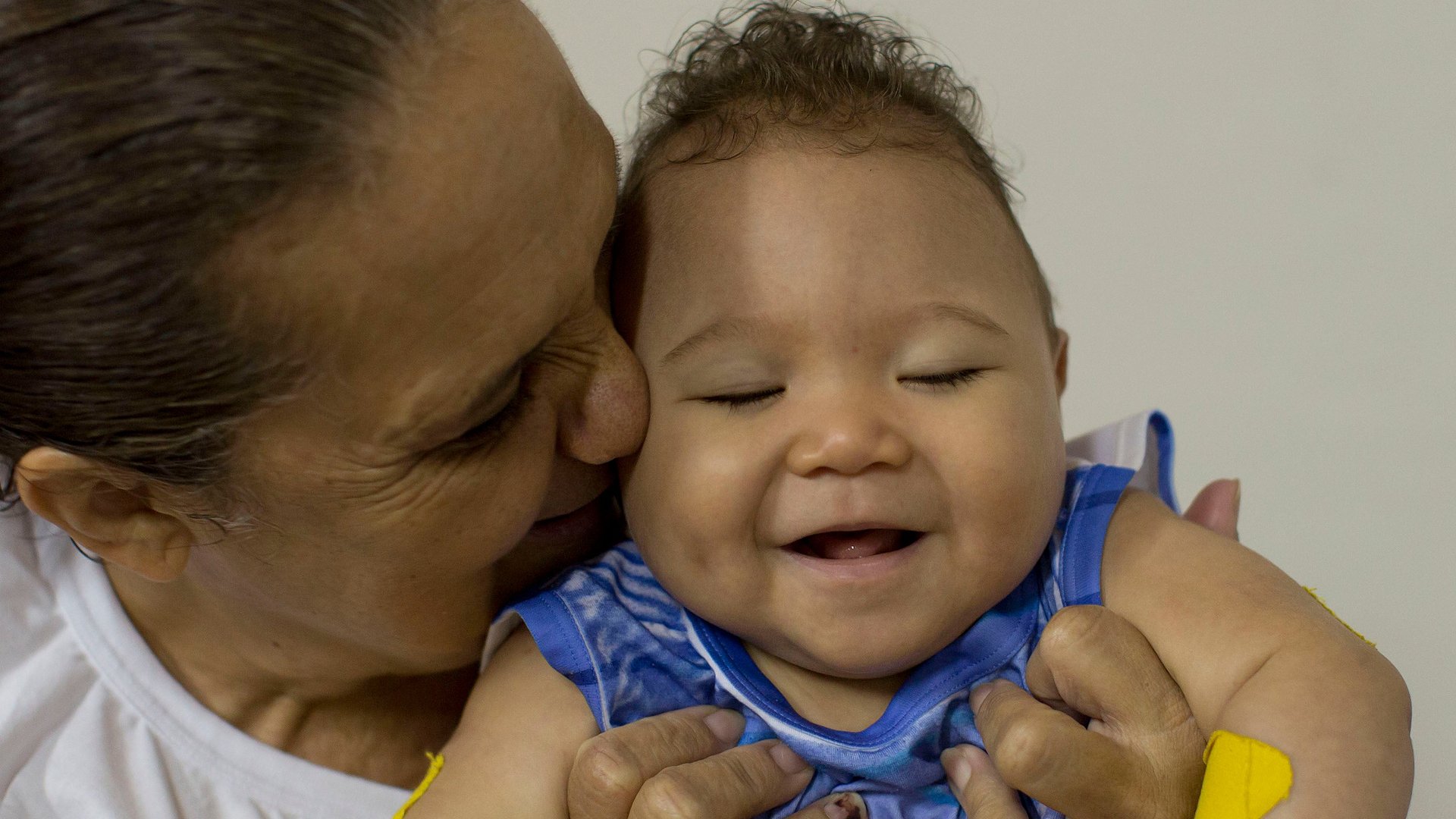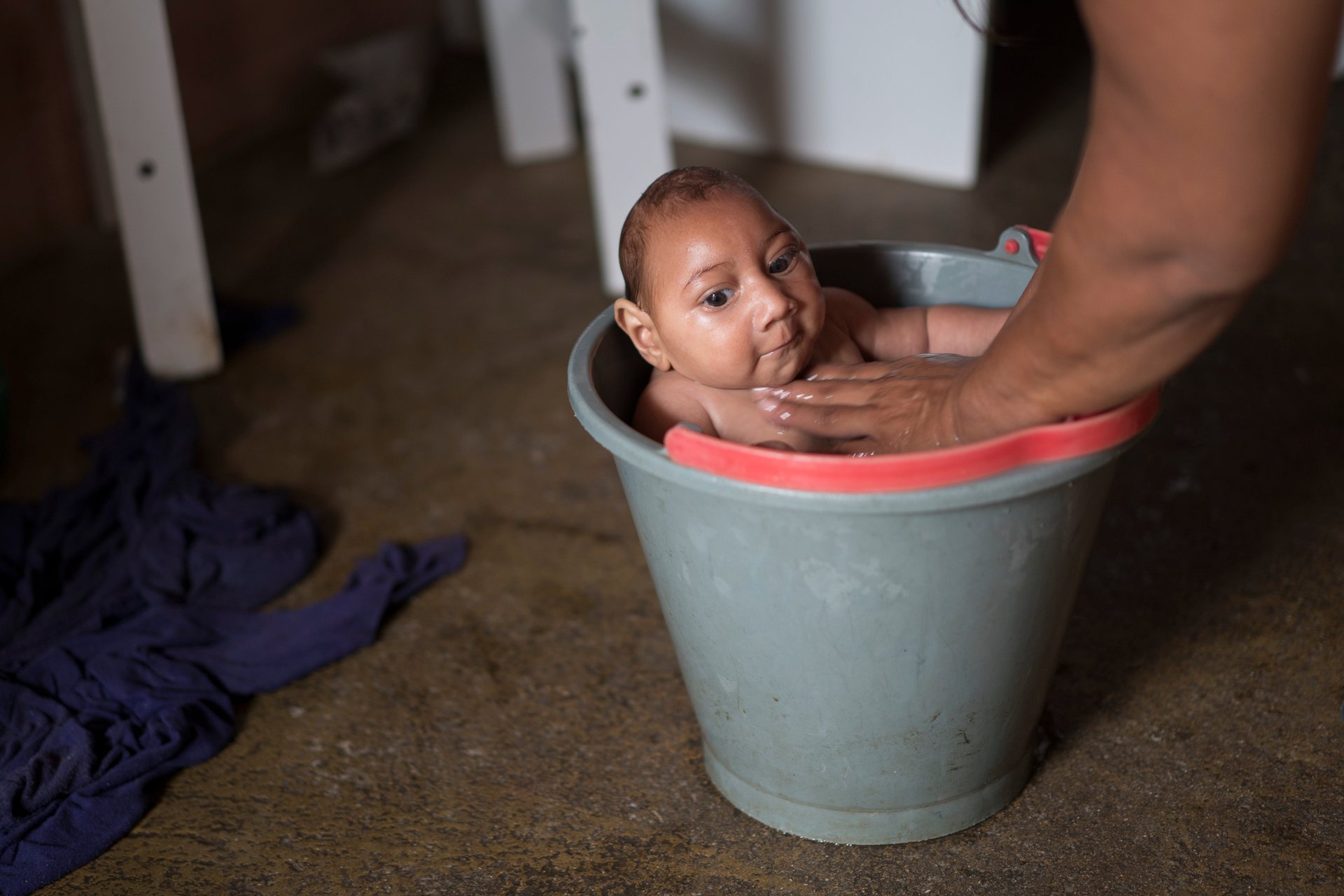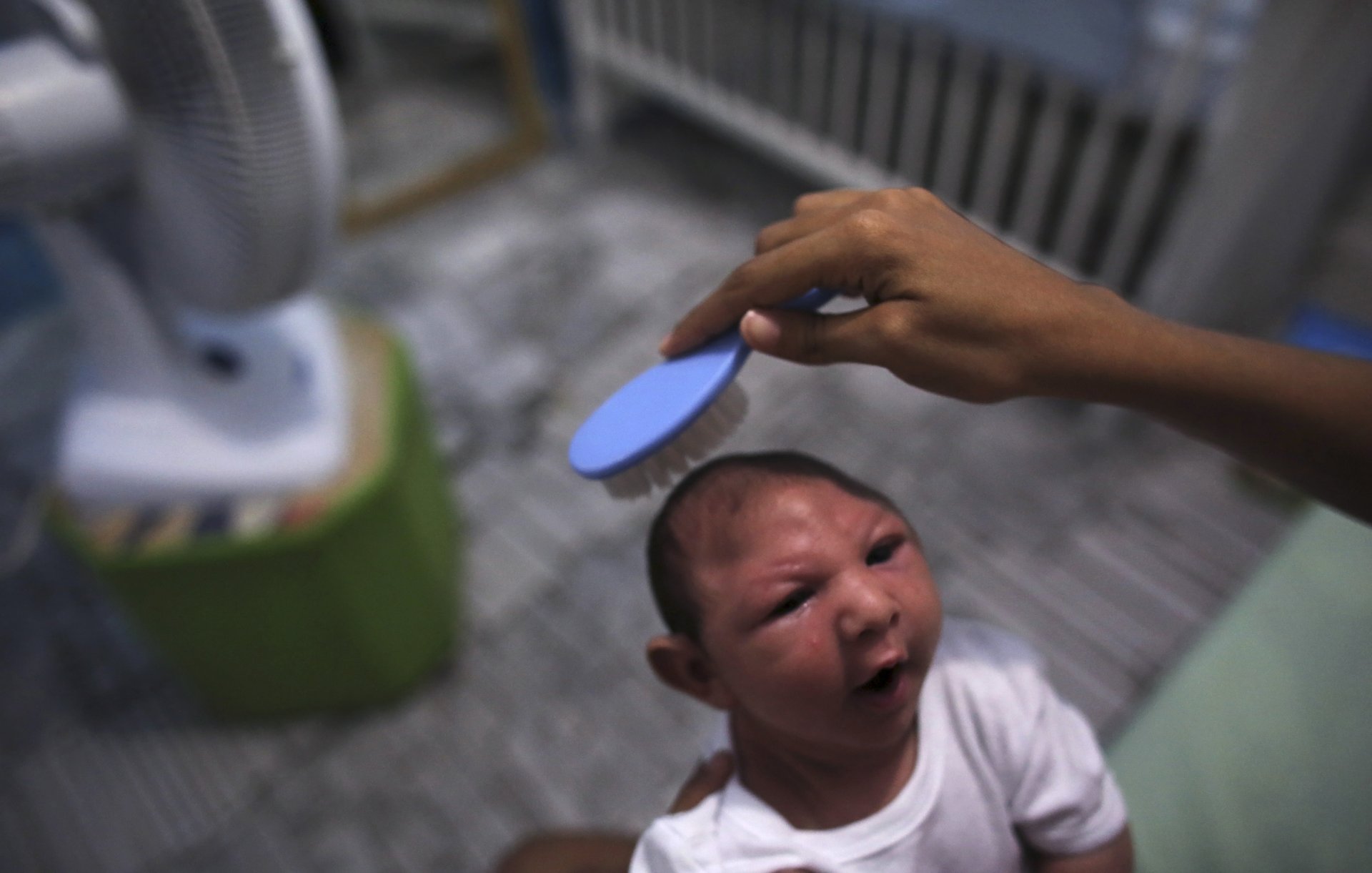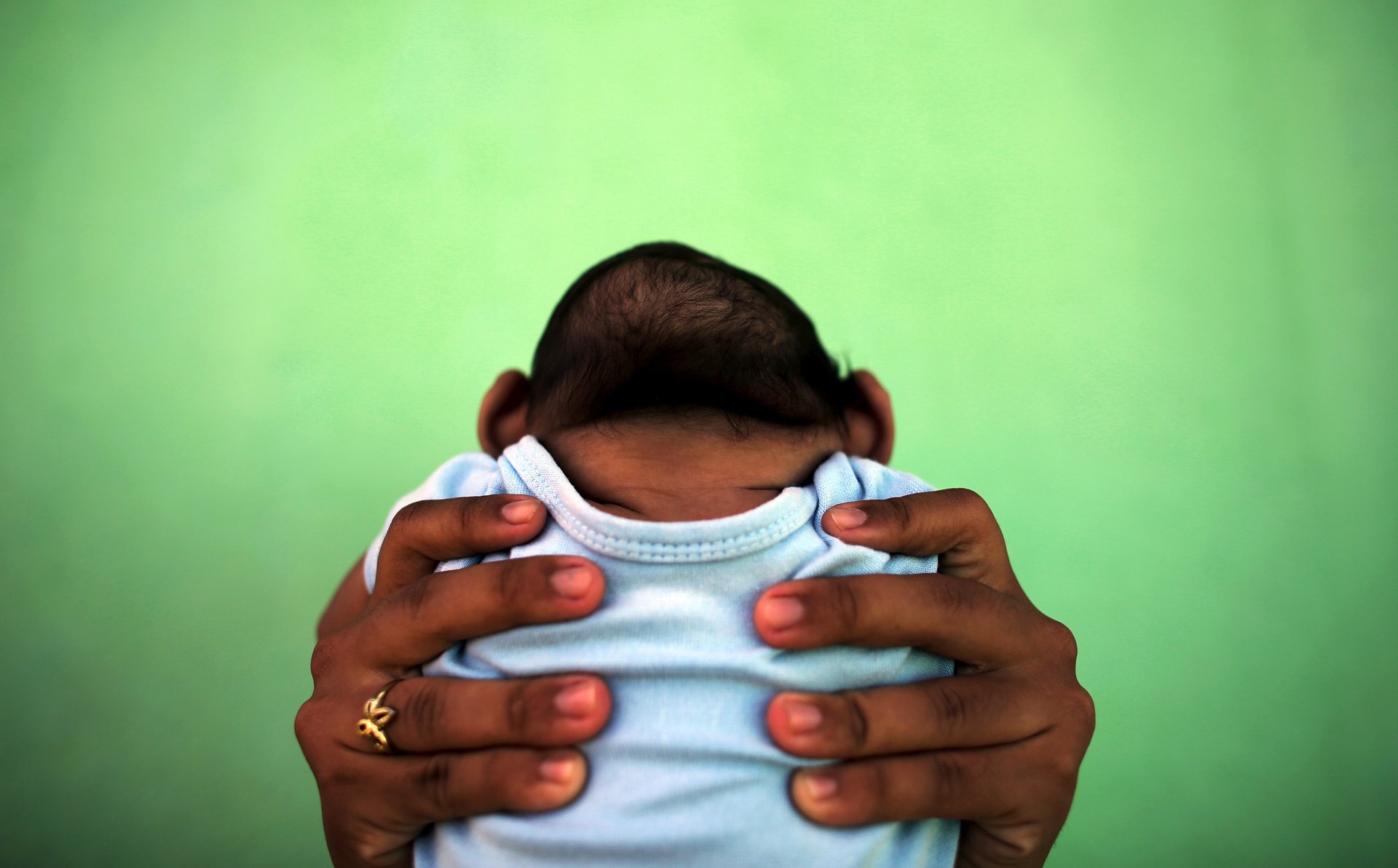Zika babies reveal our society’s deep, dangerous prejudice against disabilities
The Centers for Disease Control and Protection said on Wednesday (Apr. 13) that there is now definitive evidence of a link between the Zika virus and babies born with serious birth defects. The infectious disease, transmitted by Aedes aegypti mosquitoes, has emerged as this year’s dominant public health emergency. It’s also emerged as an international spectacle–with troubling implications for the way people around the world continue to discriminate against people with disabilities.


The Centers for Disease Control and Protection said on Wednesday (Apr. 13) that there is now definitive evidence of a link between the Zika virus and babies born with serious birth defects. The infectious disease, transmitted by Aedes aegypti mosquitoes, has emerged as this year’s dominant public health emergency. It’s also emerged as an international spectacle–with troubling implications for the way people around the world continue to discriminate against people with disabilities.
Zika typically causes only mild flu-like symptoms in most adults. But researchers believe there is a link between Zika and microcephaly: a condition in which babies are born with small, abnormally-developed heads and a range of cognitive and physical disabilities.
Much of the media coverage of the Zika virus has focused on the disabilities and deformities associated with microcephaly, and on the difficulties faced by women who are pregnant with, or have given birth to, babies with the condition. These are all important subjects for discussion. But as a disability-rights scholar, what concerns me is that the language and imagery we use to discuss disability. Too often, the narrative surrounding microcephaly relies on familiar–and disturbing–assumptions about what kind of lives are worth living.
Many of the most widely-circulated photographs of babies with microcephaly follow a familiar pattern. In these images, the baby faces the camera but does not meet its gaze. This position invites viewers to look closely the child’s skull, the light playing upon a baby’s abnormal craters and ridges. The framing encourages viewers to treat the child as a curiosity. The parent is often cropped out of the frame; we see only their hands and lap, cradling the baby, revealing nothing about him or her as a person. All we know is that they have brown skin and their babies—often fairer—are sick.




All this is part of a long tradition that presents people with “abnormal” bodies as freaks. In the early 1800s, Saartjie Baartman, the so-called “Hottentot Venus,” was subjected to the scrutiny of racist Londoners. During the Victorian era, Joseph Merrick—known as the Elephant Man—was paraded before circus attendees. Many more people with “freakish” bodies, from “Siamese” twins to bearded women, were displayed in sideshows and segregated from the rest of society for centuries.
The long history of such displays demonstrates our fascination with bodies that deviate from the norm. Disabled bodies make many people uncomfortable. They remind us of how fragile human life is, and how easy it is to fall outside of what constitutes “normal.” So isolating them as others offers a psychological balm: If freaks are a different animal altogether, then I am not at risk of becoming one.
Perhaps that is why the mothers of Zika babies are so often cropped out of photos. It is more comforting to think that microcephalic children sprang forth from mothers who look like them than to see their “normal” faces. If all we can see are the mothers’ hands, we can repress the uncomfortable knowledge that we, too, can give birth to babies with differently abled bodies.
Sideshows and the medical establishment have a long and complicated relationship with one another. As bioethicist Alice Dreger writes, many of these sideshow “freaks” in the 19th and 20th centuries also earned extra income by letting “intensely curious medical and scientific men examine them” for publication in medical journals, advancing anatomical knowledge. But they also fed the pseudo-science of eugenics, which would flourish in the 20th century with devastating consequences.
Adolf Hitler’s mad eugenic dream was to create the super race of Aryans, necessitating the annihilation of “undesirables” like Jews, Gypsies, epileptics, the chronically ill, homosexuals and “sexual deviants,” and the mentally ill. Yet Nazi eugenics was not so far removed from the eugenic policies practiced by prominent doctors, theorists, and politicians in the US.
Anti-miscegenation laws barred marriage between people of different races, and “better baby” contests at state fairs ranked children according to their physical appearance and temperament. Even Supreme Court justice Oliver Wendell Holmes, in 1927’s Buck v. Bell, ruled that a woman named Carrie Buck could be sterilized against her will because “three generations of imbeciles is enough.” The Sterilization Act, upheld in that case, remained intact into the 1970s. In fact, sterilization was so commonly forced upon black women, poor white women, the physically and cognitively disabled, and “social deviants” ranging from criminals to homosexuals that it was known as “the Mississippi appendectomy.”
When we discuss babies with microcephaly today, this history inevitably clouds our vision. The imagery of these pictures mirrors photographs of freakish specimens from medical textbooks. And the news coverage itself reveals lasting eugenic preoccupations. Many Latin American countries, including Brazil, Colombia, Ecuador, El Salvador, and Jamaica, have recommended that women in areas affected by Zika avoid pregnancy altogether. Other countries urge women who may have been exposed to Zika to delay pregnancy. Concerned reporters declare that costs related to caring for children with microcephaly will overburden cash-strapped countries.
The fact that Zika predominantly affects areas where women lack access to reproductive health care, including abortions, is certainly an issue—as are governments’ insufficient funding and infrastructure to help babies born with microcephaly, among other disabilities. Yet media coverage often focuses largely on concerns about whether or not Zika-infected mothers will be able to abort, a framework that implicitly suggests this is the logical and best option. It is not far-fetched to worry that at some point, authorities could declare that it’s better if certain people—perhaps the poor women who are disproportionately affected by the virus—are prevented from becoming pregnant entirely.
To be clear, all women deserve access to abortion. And for many mothers, abortion may be the most humane choice if prenatal screening shows that their child will be born with profound brain damage. But not all women will choose to abort children diagnosed with microcephaly—nor should they be expected to.
This debate, of course, isn’t just about microcephaly. It’s about disability in a broader sense. The philosopher Peter Singer has suggested that it should be legal to kill babies born with severe impairments, in the interests of avoiding suffering for both the child and parents. Disability-rights activists like myself believe this constitutes murder, and is founded upon an attitude that profoundly misunderstands the lives of others. Yet the issue is often treated as a sober and rational debate about quality of life.
The panic over the false connection between autism and vaccines shows how powerfully many people fear the idea of parenting a child with a disability. Many parents seem willing to wager a demonstrable risk of premature death from preventable disease over the mere possibility of having an autistic child. To extend this reasoning to its logical conclusion, such parents would appear to prefer a dead child to an autistic one. As a person with a chronic illness–and a Jew, for that matter–such arguments are a personal cause for great concern.
Parents of children with disabilities readily acknowledge that they face particular challenges–not least social stigma and lack of social services. But does this mean such children should never be born? The answer does not lie in restricting abortion access, nor in terminating all potentially disabled fetuses. Instead, as disability scholar Rosemarie Garland-Thomson says, we should work to “rescript the story” beyond the freak show. We must be mindful of the histories of discrimination that inform our perceptions of disabilities. And we should work to expand both our resources and our mindsets, so that people who are born with disabilities have the chance to live good lives.